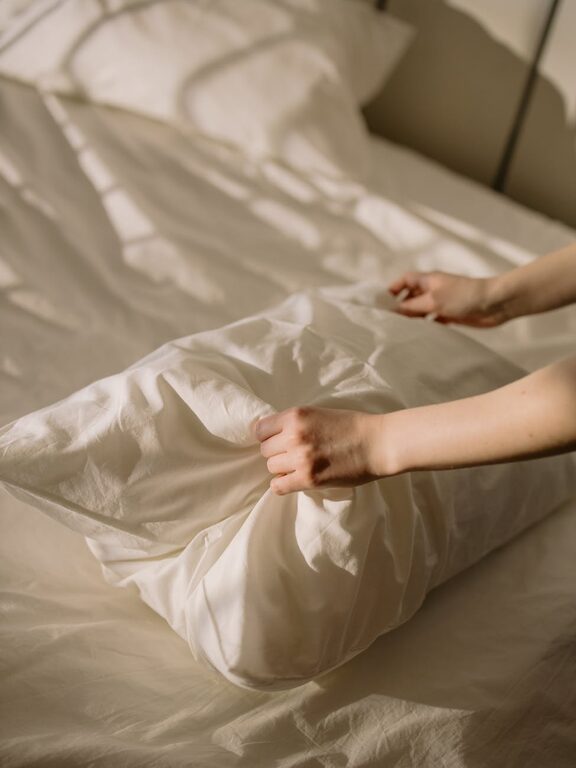When it comes to creating a cozy and comfortable bedroom, your bedding plays a crucial role. Proper care and regular rotation of your bedding not only keep it looking and feeling fresh but also contribute to better sleep quality and extend the life of your mattress and linens. In this guide, we’ll explore why rotating and caring for your bedding is important and how to do it effectively.
Why Rotate Your Bedding?
Rotating bedding, including your mattress, pillows, and linens, helps distribute wear evenly. Over time, certain spots undergo more pressure and use, which can lead to uneven wear, sagging, or premature deterioration. Here’s what proper rotation achieves:
– Maintains mattress shape: Helps prevent sagging and body impressions.
– Extends mattress life: Reduces the risk of damage from continual pressure on one area.
– Promotes even wear on pillows and mattress toppers: Keeps them supportive and comfortable.
– Keeps linens fresh: Rotating sheets and pillowcases can reduce buildup of oils and dirt in one set.
Rotating Your Mattress: Tips and Schedule
Your mattress is one of the most significant investments in your bedroom, so taking good care of it makes sense.
How Often Should You Rotate Your Mattress?
– Every 3 to 6 months: Most experts recommend rotating the mattress 180 degrees (head to foot).
– Flip when possible: If you have a double-sided mattress, flip it over about every 6 months.
– Check manufacturer instructions: Some mattresses are designed as one-sided and shouldn’t be flipped.
How to Rotate Your Mattress Safely
- Gather help to avoid injury—mattresses can be heavy.
- Remove all bedding and any mattress protectors.
- Lift and carefully turn the mattress 180 degrees so the head is where the foot was.
- If flipping, turn the mattress over as well.
- Replace mattress protector and bedding.
Caring for Your Pillows
Your pillows deserve attention too—they support your neck and head and accumulate oils and dust.
When to Rotate Pillows
– Every week or two: Flip and rotate pillows to keep them evenly plumped.
– Replace pillows every 1–2 years: Over time, pillows lose support and collect allergens.
Cleaning and Maintaining Pillows
– Check care labels before washing.
– Wash pillow covers weekly along with sheets.
– Use pillow protectors to reduce dirt and stains.
– Air out pillows weekly to keep them fresh.
Caring for Bed Linens: Sheets, Duvets, and Covers
Rotating and caring properly for your sheets and covers can greatly improve how long they last.
Rotation Tips
– Have at least two sets of bedding to rotate through.
– Wash and dry bedding according to fabric instructions.
– Rotate sets weekly to reduce wear on any one set.
Washing Best Practices
– Use gentle detergents and avoid bleach to protect fabric fibers.
– Wash in warm or cold water depending on fabric type.
– Dry bedding on medium heat or air dry to prevent shrinkage.
– Avoid overloading the washing machine for a thorough clean.
Storage Tips
– Store clean bedding in a cool, dry place.
– Avoid plastic bags which can trap moisture; use breathable cotton bags instead.
Additional Tips for Bedding Care
– Use mattress protectors: Helps prevent stains, dust mites, and allergens.
– Vacuum your mattress: Regularly vacuum your mattress surface to remove dust and debris.
– Keep pets off the bed: Pets can bring dirt, oils, and allergens that wear down linens.
– Maintain bedroom humidity: Keep humidity at 30–50% to prevent mold and mildew on bedding.
Summary
Rotating and caring for your bedding doesn’t have to be complicated. By following a simple routine of rotating your mattress and pillows, washing and rotating linens, and protecting your bedding with covers, you can create a healthy, comfortable sleep environment that lasts. These small habits will not only improve your sleep but also keep your bedroom looking fresh and inviting.
Remember, a peaceful night’s sleep starts with caring for what you sleep on!


